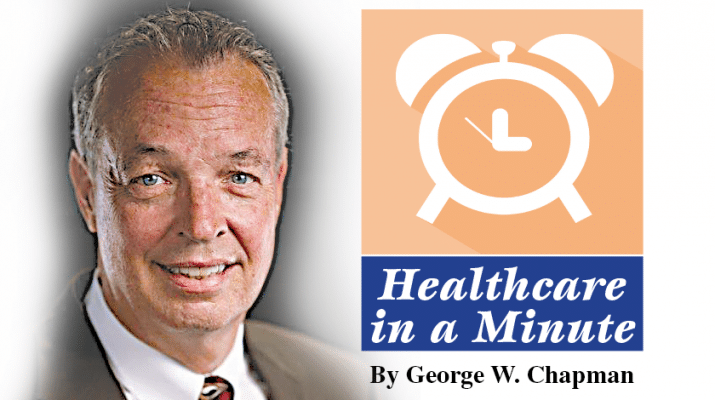By George W. Chapman
One in five of us lives in a rural community.
Since 2010, 138 rural hospitals have closed, typically for financial reasons. Nineteen rural hospitals closed in 2020 alone.
People that live in rural areas are subject to shorter life spans and higher mortality than those living in urban and suburban areas. Consequently, CMS is proposing a new designation, “rural emergency hospital,” to bolster services and financial viability.
In addition to supporting emergency services, Center Medicare & Medicaid Services is looking to support and stabilize maternal, behavioral and addiction services.
While this is well intentioned, few rural hospitals, despite the REH designation, will survive alone. Recruiting and retaining qualified physicians, nurses and ancillary service providers like pharmacists and techs, will still be a struggle. To survive, REHs must affiliate or integrate with a larger healthcare system. Otherwise, staffing shortages will be their downfall.
In addition to protecting rural hospitals per se, CMS must also protect rural EMT services. EMTs are overworked and underpaid, especially those servicing rural areas. Once you have been stabilized at a rural facility, it is the EMT who cares for you when you are transferred to a larger hospital post -accident, -heart -attack, -stroke, -overdose or -complicated delivery.
The REH designation would be affective January 2023.
ACA: 30 Million Are Now Covered By It
More than 35 million Americans, or one in 10, are covered by the Affordable Care Act. Millions rely on expanded Medicaid or income-based subsidies. Originally, for those who don’t qualify for Medicaid, premium subsidies ended once you earned more than 400% of federal poverty guidelines. (In 2022, the individual poverty level is $13,590; for a household of three it’s $23,000.) Once over than the 400% threshold, you paid the full premium. Consequently, millions of people dropped insurance. Consequently, Congress passed the American Rescue Plan which gave relief to those making just more than 400% of poverty guidelines. It limited the amount spent on insurance to 8.5% of income. If not renewed, the ARP will expire end of this year. The Kaiser Family Foundation estimates premiums would double for 3.4 million people causing most to drop coverage altogether.
Savvy states are scrambling to develop back-up plans if the ARP is not renewed by Congress.
Social Determinants of Health
Your family history and your genes have a lot to do with how long you will live and your overall health. But the social determinants of health can easily negate your family history and the best of genes. Physicians and insurers agree that without addressing these social determinants, the best efforts of providers can be for naught. Among the social determinants impacting health status are food and shelter security, access to care, gun violence, climate change and addiction. Large insurers are investing in food and shelter for members in need. For example, United Health has invested $45 million in goods and resources for at-risk populations, saving the member $1,200 to $1,500 in out-of-pocket expenses annually. Keeping healthcare costs down helps everyone, not just the insurance company. A recent Medscape survey of physicians (2,342 respondents) revealed what they consider to be the most important social determinants of health: access, 85%; substance abuse, 66%; gun violence, 53%; climate change, 51%.
Over 380,000 Mental Health Apps
Since COVID-19, both apps on your phone and companies offering services online or via telehealth have increased exponentially. Digital mental health, for better or worse, has become the darling of venture capitalists. The potential benefits are clear: access, privacy, personal, low cost. There are more than 380,000 direct-to-consumer apps on your Apple or Android phone and 20,000 are specific to mental and behavioral health like Talkspace and Calm. There are apps by which providers can prescribe like reSET. There are platforms designed for employers and insurance companies like Ginger, Lycra Health and Modern Health. But do they all work? Naturally, the rapid proliferation of digital mental health has engendered a lot of skepticism among traditional face-to-face mental health providers, academia and insurers. Many of the startups went bankrupt, leaving patients stranded. But to be fair, access to traditional face-to-face care is difficult so you can’t blame someone for trying digital. Unless the severe shortage of mental health professionals improves, digital is the answer for millions of consumers. The digital industry needs validation, which comes from research and then academic publication. A more global issue with digital mental health is integration and coordination with a patient’s primary care provider, healthcare system and electronic medical record. If this is not effectively accomplished, we are just continuing down the road of expensive, disjointed, ineffective healthcare.
Labor Shortages
According to a survey of hospital and medical group CFOs, their No. 1 concern effecting financial viability, access and patient experience is the continuing labor shortage exacerbated by COVID-19, early retirements and a recession. Consulting firm Kaufman Hall says a solid one-third of their clients are suffering with no end in sight. Ninety percent of KH clients cite labor shortages as their No. 1 threat followed by overall rising expenses, supply chain problems, diminished consumer demand impacted by COVID-19, cyber threats and resulting pressure on remaining staff.
Healthcare Elsewhere
I just returned from touring Scotland, England and France. All three countries have universal coverage, basically “Medicare for all” in our parlance. Naturally, (of course!), I queried unsuspecting tour guides, Uber drivers, wait and hotel staff, and anyone I befriended at bars and restaurants about their healthcare. The vast majority were satisfied with access, providers, quality and their overall care. There were the usual complaints about government bureaucracy. But then again, don’t we complain about our insurance companies? The one thing everyone stressed, (once realizing I was American), is citizens are covered and lack of money is not a barrier to getting care like in the U.S. They cannot fathom why such an advanced country as the U.S.A. doesn’t guarantee healthcare for all. They expect their government to guarantee care and even when complaining about their system, they became very defensive when I poked holes. The prevailing attitude was there are plenty of things to worry about in this life and getting healthcare should never be a worry.

George W. Chapman is a healthcare business consultant who works exclusively with physicians, hospitals and healthcare organizations. He operates GW Chapman Consulting based in Syracuse. Email him at gwc@gwchapmanconsulting.com.

